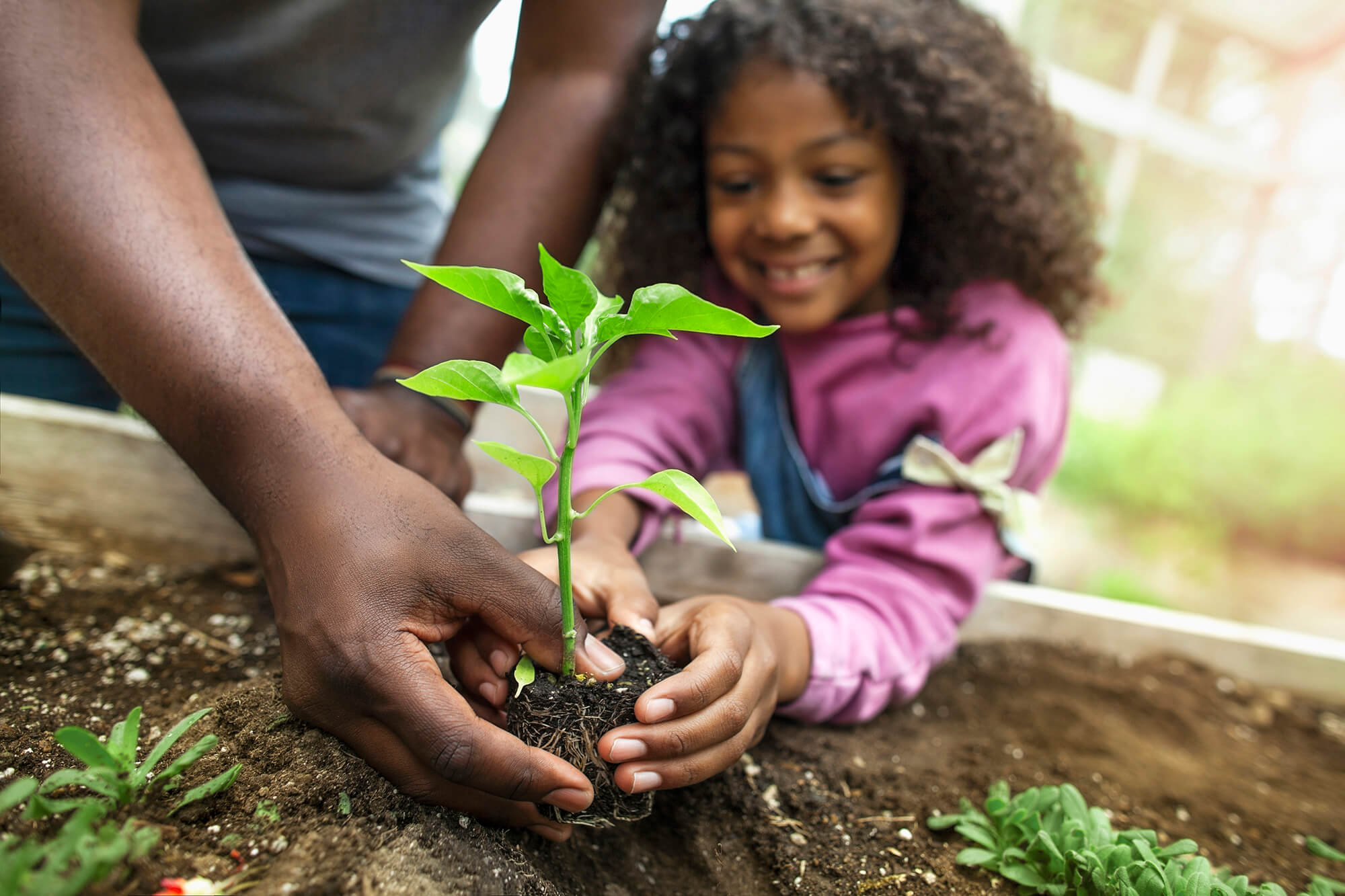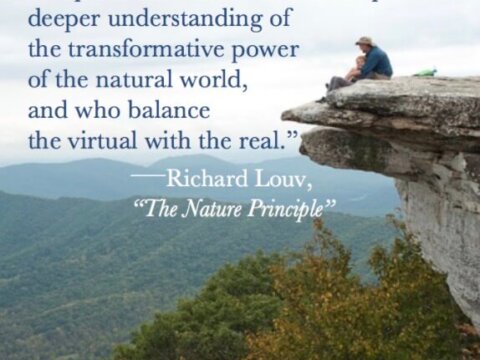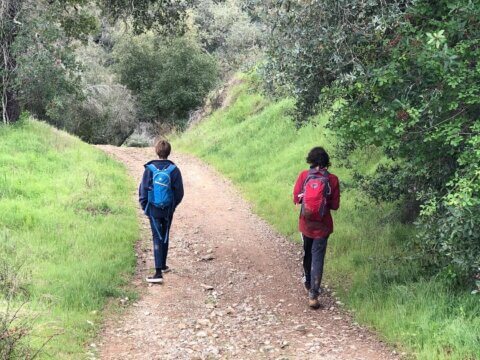Investments in nature are a win-win for communities recovering from COVID-19: Q&A with Dr. Hanaa Hamdi
A few weeks ago, we marked the one year anniversary of the COVID-19 pandemic. Vaccines and the arrival of spring bring hope, but the disparities in housing, food, education and employment that became glaringly apparent during the pandemic remain deeply entrenched. These disparities are most often the result of redlining practices. It’s the same story for nature access. While parks and trails have seen unprecedented use during the pandemic, communities impacted by redlining lack access to safe, nature-filled places. Recognizing that a “return to normal” perpetuates these conditions, important conversations are happening about how communities can recover from COVID-19 more equitably.
We explored this topic with Dr. Hanaa Hamdi who leads health equity strategy for New Jersey Community Capital. She also serves on the Children & Nature Network board of directors.
C&NN: What has the past year shown us about the need for nature—and access to it?
HH: Intuitively, we know that nature is good for us and that we are all better off with nature in our lives. There is a growing body of scientific evidence that supports the benefits of nature for both our physical and mental health.
In 2020, when shelter-in-place orders were issued in response to the COVID-19 pandemic, many families and children with access to safe greenspaces sought nature to cope with the pressure and uncertainty of the crisis. People without safe access to nature, many of them Black and brown, were also disproportionately impacted by the pandemic. Those who could have benefitted the most from safe natural places often had the least access to them. This is not a coincidence. The reasons are myriad but are firmly rooted in structural racism, which is inseparable from other forms of racism and suffused in residential segregation and environmental racism.
The COVID-19 crisis has amplified racial inequities that existed well before the pandemic. In the same communities where we see lack of affordable and safe shelter, access to healthy food, clean water and fresh air to breathe, we also see lack of access to safe parks and other green infrastructure. Collectively, these environments of inequity became opportunistic grounds for COVID-19 disease transmission and deaths.
It has become apparent this past year that we urgently need holistic and inclusive community planning and development practices. We need to do away with binary strategies that pit housing needs over greenspaces or clean air and adopt comprehensive practices that prioritize equitable access to safe and healthy shelter, healthy food, clean water and fresh air, and greenspaces for all.
C&NN: You’ve noted that housing and health disparities go hand-in-hand with a lack of nature access. How so?
HH: Pathways are key public health tools that track the history of the social circumstances that have created current health conditions in a given environment. Housing and health pathways such as affordability, quality and safety, including neighborhood conditions, are well established. Many low-income Black and brown communities with greater health disparities are places that have experienced residential segregation. That segregation gave rise to the health inequities and poor health outcomes we observe today. For example, a new report from the National Community Reinvestment Coalition on the impact of redlining on neighborhood health shows increased prevalence of poor mental health, lower life expectancy at birth, higher prevalence of poverty and greater social vulnerability.
In addition to reinforcing residential segregation, redlining economically disincentivized developers and investors from investing and building in redlined neighborhoods, which prevented many municipalities from allocating public funds for greenspaces, improved drinking water, sewer infrastructure and tree cover. As a result, these previously redlined neighborhoods are likely to be hotter, have poorer air quality and drinking water and are more prone to flooding. A recent study on Lack of tree cover and related exposure to extreme heat shows same-day temperature variance between redlined and non-redlined neighborhoods are between 4.7 and 20 degrees Fahrenheit. Urban heat effects can translate into higher electricity bills, exacerbate existing health conditions such as asthma and other respiratory conditions, or worse, lead to hospitalization for heat stroke.
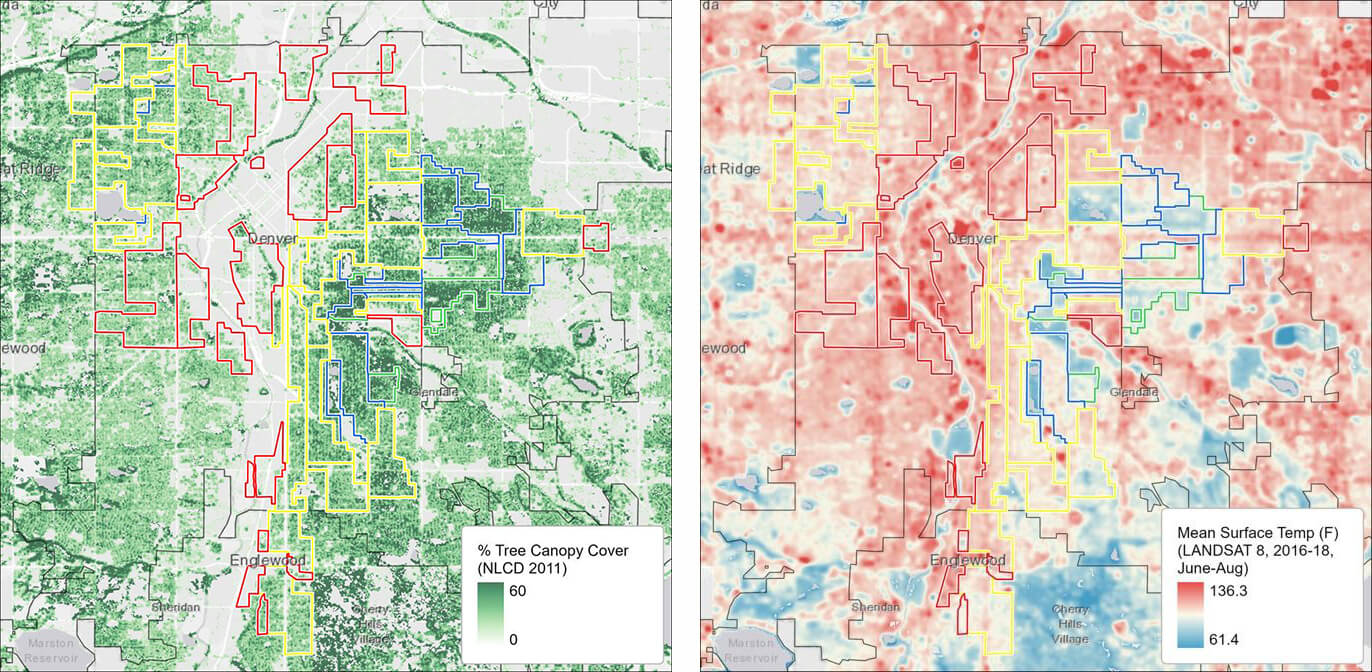
Maps of Denver, CO show neighborhoods, outlined in red, that were once redlined. Today, such neighborhoods often have fewer trees and experience hotter temperatures in summer than other neighborhoods. Source: Groundswork USA
C&NN: Cities have many priorities to balance. Where does nature access fit?
HH: I believe we need to reimagine how we think about greenspaces and how we make the case for them. This is a great moment in time to push for access to greenspace as a human right and as an essential tool to combat the negative effects of climate change. Specifically, we need a change from the belief that nature is an amenity for some, to guaranteeing nature access as a right for all—as much as safe shelter and water are rights.
What if we begin to operate from the premise that greenspaces are health infrastructure tools necessary to mitigate further climate risks such as urban health effects, flooding, fires and food insecurity?
Thinking more expansively about greenspaces, in addition to leisure and recreation, can shape not only how we plan and redevelop our communities to include nature but also how we allocate public and private funding.
C&NN: How do we make the case for investing in nature access?
HH: Making the case for investment in nature begins by raising awareness of the myriad ways in which nature benefits everyone at the table, both directly and indirectly. Greenspaces are essential building blocks to the physical, environmental and economic health of people and communities. When possible, leverage real estate and other parts of community development to incorporate park development. This will save money and time.
Public dollars can’t do it alone; strong public-private partnerships that prioritize community goals are necessary to support park creation, maintenance and programming. Some cities use tax incentives to encourage corporate investment in the built environment. Health insurers and real estate developers are among the emerging leaders in local greenspace investment who often enjoy the benefits of such tax breaks. Other investors in greenspace include health and hospital systems. In addition to tax incentives and mandates, these anchor establishments are often the largest employers in the communities they serve, so investment in greenspace becomes a welcomed opportunity to improve the health and quality of life of their employees. They know that creating healthier environments leads to reduction in workplace absenteeism and improved mental health and well-being for their employees.
C&NN: Can you share some examples?
HH: There are many great examples but the top three that come to mind are:
Avenue Place Park and Trail in Houston, TX is a one-acre trail and greenspace nestled in the 20-acre Avenue Terrace mixed-income development. The development offers recreation space for residents, transportation to local parks and schools, and easy access to neighborhood destinations. What makes this greenspace interesting is the holistic approach to development that optimized public policy and cross-sector partnerships to bridge the gap between needs and resources. In accordance with Houston’s Park Dedication Fund, which obligates residential developers to set aside greenspace (or pay a fee of equivalent value), Avenue Community Development Corporation set aside land for park space. The Houston Parks and Recreation Department, in partnership with Avenue CDC and private partners Wells Fargo, Community Bank of Texas and National Equity Fund, structured a public-private investment fund to build the park.

Avenue Place Park development, Houston, TX
Columbia Valley Community Health (CVHC) in East Wenatchee, WA, is another great example. As a Federally Qualified Health Center (FQHC), the clinic receives funds to provide primary care for underserved communities. Gestational diabetes, the onset of diabetes during pregnancy, is a serious issue in the community with a multigenerational impact: children born to women with gestational diabetes are more likely to develop Type I Diabetes. CVHC started to question the role of the built environment and social change on health behavior. They asked, “How can we change the built environment and improve social connections to improve the health behavior and health outcomes, such as gestational diabetes? How can we give people access to healthy food and ownership over what they eat?” They talked to the community, and in particular, to women. They partnered with the Trust for Public Land and Eastmont Metropolitan Parks & Recreation, who were redeveloping an old orchard that had been cleaned up through the EPA’s Brownfields Program. The result will be 9th Street Park, just downhill from the clinic and the first new park in East Wenatchee since 1959. The park will serve more than 3,000 people who lack access to greenspace, closing East Wenatchee’s biggest park gap. 9th Street Park will feature a playground with a fitness area for moms, community gardens and a farmers market that will provide access to fresh, healthy food and economic benefits for local growers. The brilliance of this project is that one organization dared to think differently and broadly to address a single health concern, gestational diabetes. Their idea led to a project that is bringing the community together to create something transformational.
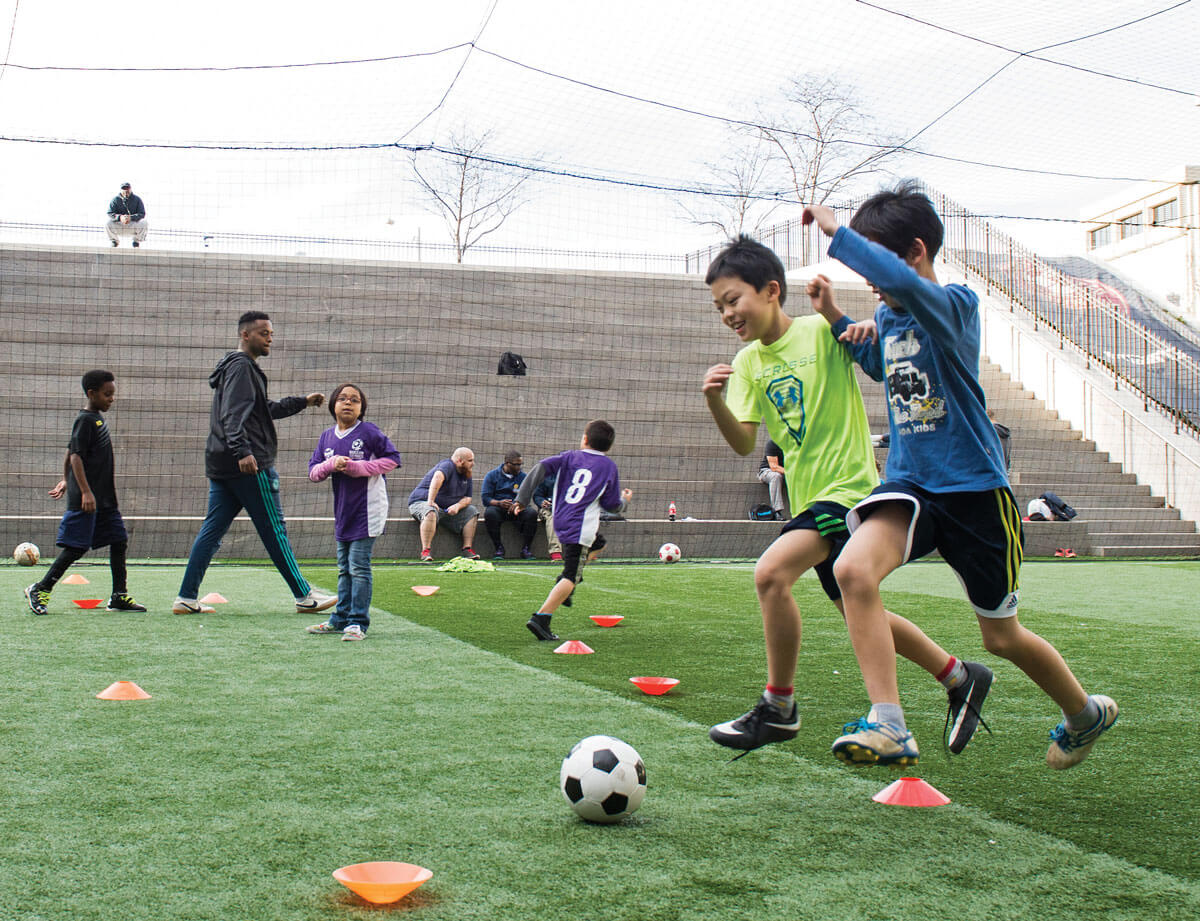
SoccerStation™, Atlanta, photo by Caroline C. Kilgore, Instagram @carolinecarbinekilgore
Another creative example is StationSoccer™ in Atlanta, GA. Recognizing that many kids in Atlanta don’t have safe places to play outdoors or the resources required to travel for sports, Soccer in the Streets partnered with the city’s transit authority (MARTA), the Atlanta United Foundation, Transformation Alliance, Atlanta United FC and others to create the “World’s First Transit Soccer League.” StationSoccer™ creates mini soccer fields alongside MARTA stations, turning underutilized lots into accessible green spaces. Kids take pride in playing for their own stations and travel to other parts of the city. Neighborhoods enjoy access to new greenspaces that also help manage stormwater. As the program grows, people will likely articulate more needs. “We need trees here for shade, we need more benches and places to relax.” It’s an example of how one idea can proliferate into something much bigger. It’s a win-win.
Thriving together: A springboard for Equitable Recovery & Resilience in Communities Across America
Cities Connecting Children to Nature
National League of Cities CitySpeak blog: Why cities prioritized equity and children’s access to nature during a pandemic, by Joshua Falk
Our need for nature in the time of COVID, by Richard Louv
-
Network News
POLICY UPDATE: Policy and advocacy for the children and nature movement
-
Voices
Binoculars, bald eagles and my journey as a Black birder
-
Richard Louv
THE WONDER BOWL: Ten Spring and Summer Nature Activities for Kids and Adults
-
Network News
Minneapolis Spotlight: The promise and possibilities of parks for youth
-
Voices
Why nature is my motherhood ally


